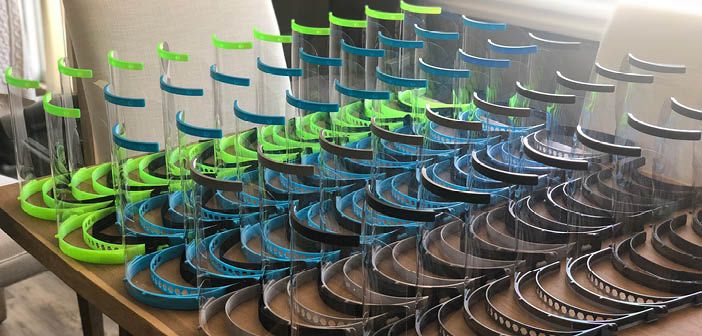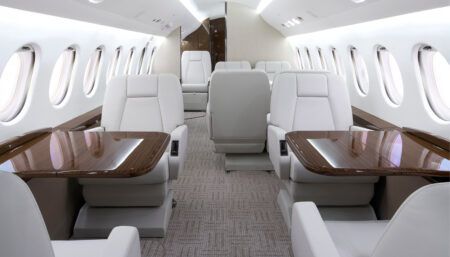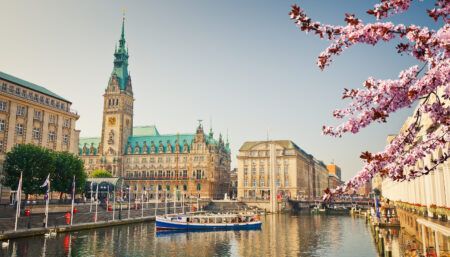 Sean Gillespie, executive vice president of operations at Flying Colours, explains how the centre has maintained its full range of refurbishment, completions and MRO services despite the challenges of COVID-19.
Sean Gillespie, executive vice president of operations at Flying Colours, explains how the centre has maintained its full range of refurbishment, completions and MRO services despite the challenges of COVID-19.
Have you been able to stay open/offer your full array of services throughout?
As an aircraft repair station, we are deemed an essential service by the authorities in the USA and Canada, and at our location in Singapore, as we deliver the required services to keep aircraft flying. We have remained open to support our customers around the globe. We have continued to offer our full range of services at all our locations.
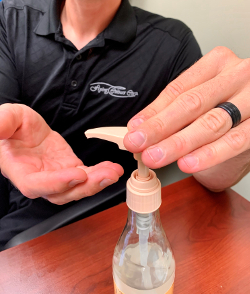 What new operational procedures have you implemented?
What new operational procedures have you implemented?
We have implemented many operational procedures to protect our workforce, customers and visitors. We installed hand-sanitisation stations at regular intervals around the facilities and all aircraft that are being worked on have a thorough cleaning to ensure they are germ-free. Colleagues are adhering to the need to keep a respectable distance from each other and to reduce contact we have minimised movement between our buildings at all our sites. We have also been monitoring our teams and if anybody shows signs of sickness, we are asking them to go home. These remain standard operational procedures.
How has demand been impacted?
We have had a mix of everything. Some customers have delayed work because they have aircraft in Europe and seeking permits to fly to us has been difficult. Other customers have moved their maintenance schedules forward as their ability to routinely fly has been reduced by the lockdown.
As yet we haven’t seen too many changes in terms of what interior modifications are being requested, but we are beginning to receive inquiries about medevac options. I suspect we may see more of this as we come out on the other side of the pandemic. Savvy owners recognise that a medevac interior enhances the aircraft value, enabling it to be used in a different way during this type of crisis. In a world that travels so much, the need for medevac transport is growing.
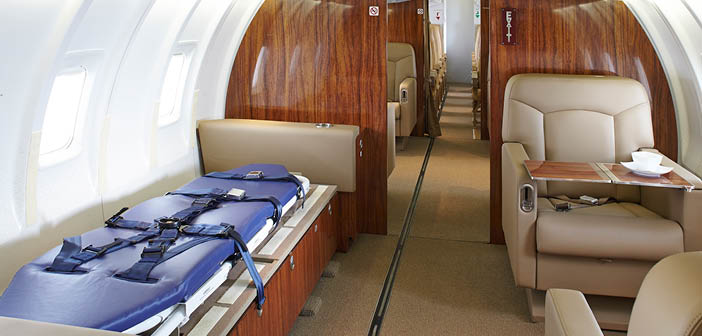
Have you had staffing challenges?
The staffing challenges have revolved around figuring out who can work at home and who we need to have on-site. Our team is great; they were very flexible about what they needed to do. For those working on maintenance and interiors, the hardest part has been remembering to keep a distance, but everybody has been adhering to the safety criteria. It was harder at the start as we had many colleagues in Canada who had just returned from the spring break, which meant they had to quarantine for two weeks. This included some of our senior executives. The bottom line is to keep our team safe, employed and to maintain business continuity.
Have you had supply chain challenges?
We saw a major interruption of our supply chain from numerous suppliers across the globe. This created a lot of challenges with getting projects that were already in progress completed, but we worked with our suppliers and customers to find workarounds that allowed us to continue to get aircraft delivered. A lot of the suppliers in North America have reopened or are in the process of doing so, but we are still seeing some impact from our European suppliers. We have had to adjust schedules and find other ways of completing some functions, but overall we are getting through it.
What other challenges have you faced?
Like everybody else in the industry, the uncertainty has been a challenge as it is hard to plan when you don’t know what is coming. Right now we are working on completing our new hangar in Peterborough, Ontario, which will be used for completions and refurbishments. This is our largest building to date and once complete it will accommodate aircraft up to A220 size, or three large-cabin business aircraft at the same time. It will open late summer 2020. We had just opened our new paint facility, and that was put to work pretty much the week it opened.
Have you benefitted from state support?
We have been able to get some support from the Canadian government because they have been assisting business of all sizes to get through the pandemic.

Have you adapted to make more use of technological tools?
Like many companies we’ve discovered the joy of Zoom meetings and that has been useful to keep us all engaged with ongoing projects. We even used it when we were on the same site; it helped reduce the amount of movement between the buildings. I imagine we will use more of this going forward.
We have also used similar technology to talk customers through ongoing projects. We have literally taken a tablet or smartphone and shown them the work completed on the aircraft. It may not be exactly the same, but we have found it has proven very effective in maintaining contact with the customer and enabling them to see the progress. I suspect we will continue to do this after the pandemic.
Do you think there will be any long-term changes to the industry going forward?
Now is a good time for the industry to deliver the global message that business aviation is a valuable business tool and I’d like to see the industry delivering that message. In addition, it seems many more people will now consider planning business aviation travel into their budgets as flying commercially will just be off the table for senior executives. This could bring more people to the sector.
Are you planning any adjustments to your operations in light of these predictions?
We have always worked on special-mission projects but following the pandemic this is an area we plan to expand on. We are also anticipating an uptick in pre-owned sales as newcomers to the market purchase good-quality aircraft and then choose to refurbish them. There won’t be a huge change in operations overall, but we expect we are going to be busy. Our pipeline for the next 18 months is very encouraging.
We already use 3D-printing for some components and going forward I anticipate we’ll maximise this technology more in the future.
Has your company been involved in community support projects?
Our upholstery team made more than 1,000 face masks during their breaks and quieter periods. These were donated to our local hospital for use by visitors and frontline workers. While not medical-quality masks, they were very welcome for personal use as well as by visitors going to see relatives and friends in hospital. One of our team also took the time to 3D-print some transparent face shields for use by our colleagues at work and at home.
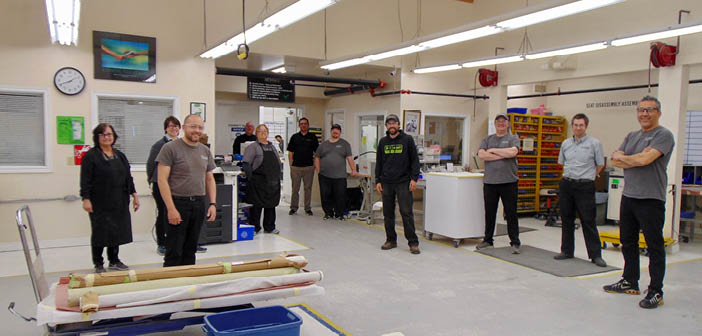
Check out the upcoming July 2020 issue of Business Jet Interiors International for a full report on how completion centres around the world have responded to the COVID-19 pandemic.


